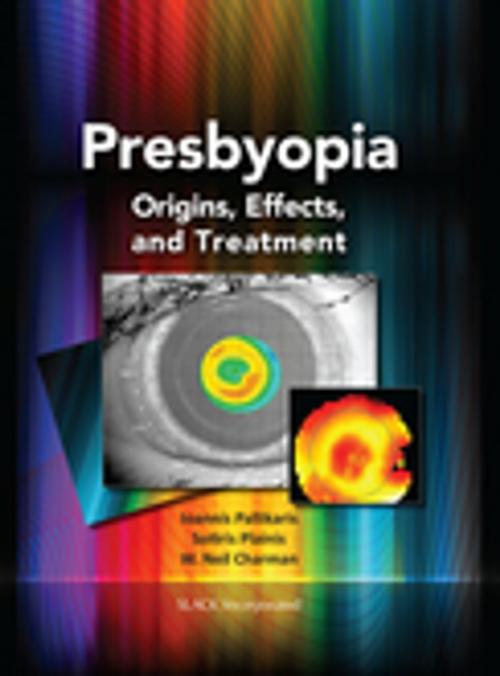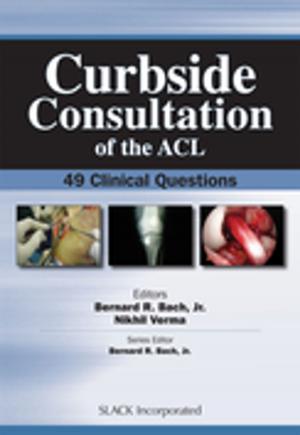Presbyopia
Origins, Effects, and Treatment
Nonfiction, Health & Well Being, Medical, Specialties, Ophthalmology| Author: | ISBN: | 9781617118487 | |
| Publisher: | SLACK Incorporated | Publication: | June 15, 2012 |
| Imprint: | SLACK Incorporated | Language: | English |
| Author: | |
| ISBN: | 9781617118487 |
| Publisher: | SLACK Incorporated |
| Publication: | June 15, 2012 |
| Imprint: | SLACK Incorporated |
| Language: | English |
Presbyopia: Origins, Effects, and Treatment takes a complex and common condition—the aging eye—and summarizes the current views on the optics and physiology of accommodation and the age-dependant changes that lead to presbyopia. Drs. Ioannis G. Pallikaris, Sotiris Plainis, and W. Neil Charman are joined by more than 50 world recognized contributors and present an up-to-date book that discusses demographics and visual impairment due to the uncorrected condition and provides an overview of clinical aspects of presbyopia, including refraction techniques and its management with contact lenses, spectacles and a range of surgical approaches. Inside You’ll Find: Review of the accommodation system and its performance Effect of the passing years on accommodation, general optic characteristics, and neural performance Detailed reviews of various current and proposed methods for correcting presbyopia Presbyopia: Origins, Effects, and Treatment also features more than 200 color images inside 35 chapters, a robust glossary of terms, and a comprehensive index for easy reference. Presbyopia: Origins, Effects, and Treatment is an interdisciplinary approach to various methods and theories for the most accommodating way to treat presbyopia and will be a welcome resource for ophthalmologists and optometrists.
Presbyopia: Origins, Effects, and Treatment takes a complex and common condition—the aging eye—and summarizes the current views on the optics and physiology of accommodation and the age-dependant changes that lead to presbyopia. Drs. Ioannis G. Pallikaris, Sotiris Plainis, and W. Neil Charman are joined by more than 50 world recognized contributors and present an up-to-date book that discusses demographics and visual impairment due to the uncorrected condition and provides an overview of clinical aspects of presbyopia, including refraction techniques and its management with contact lenses, spectacles and a range of surgical approaches. Inside You’ll Find: Review of the accommodation system and its performance Effect of the passing years on accommodation, general optic characteristics, and neural performance Detailed reviews of various current and proposed methods for correcting presbyopia Presbyopia: Origins, Effects, and Treatment also features more than 200 color images inside 35 chapters, a robust glossary of terms, and a comprehensive index for easy reference. Presbyopia: Origins, Effects, and Treatment is an interdisciplinary approach to various methods and theories for the most accommodating way to treat presbyopia and will be a welcome resource for ophthalmologists and optometrists.















